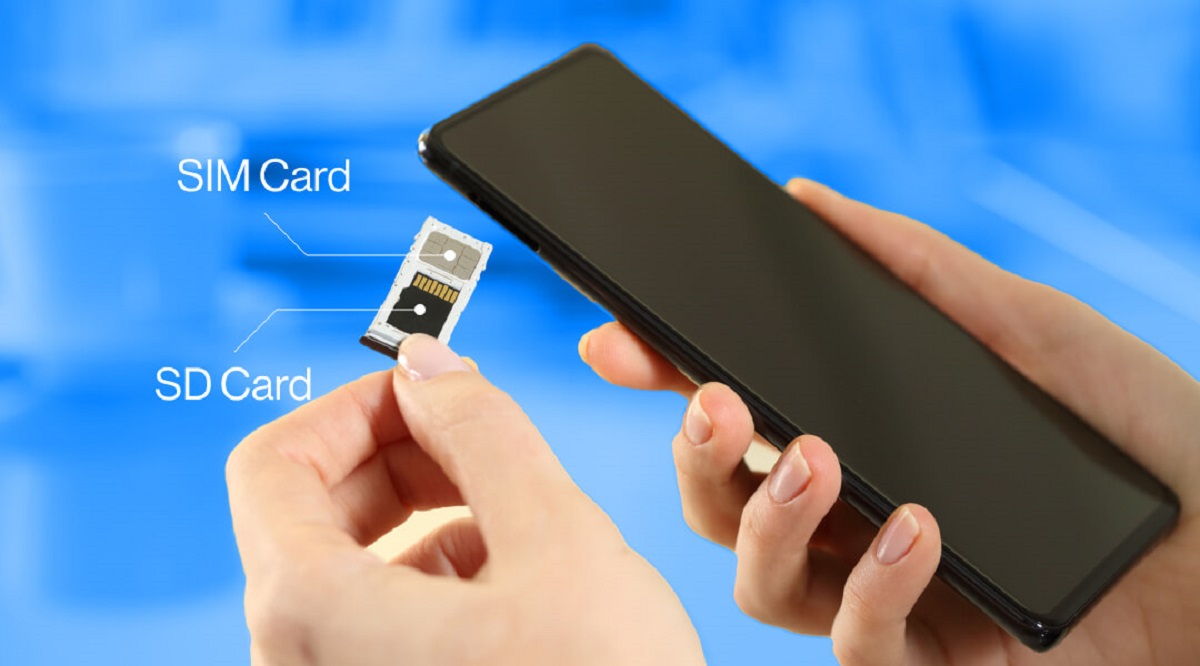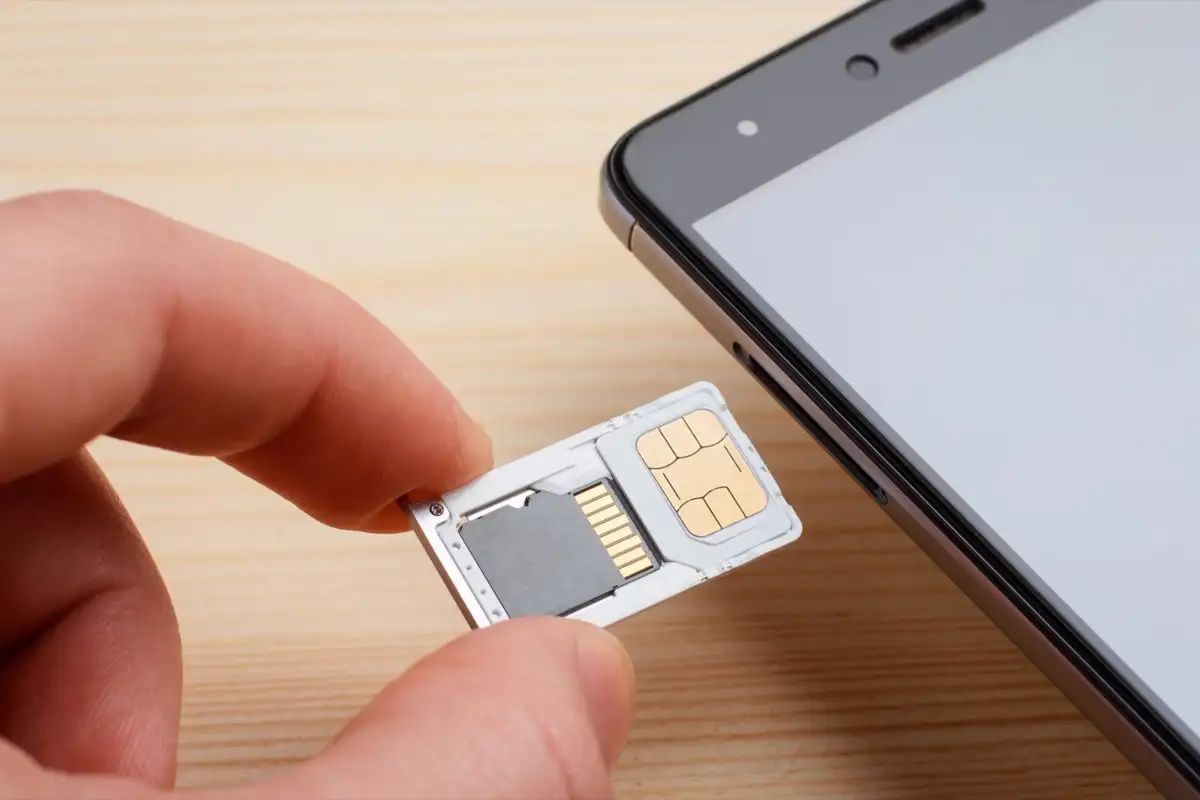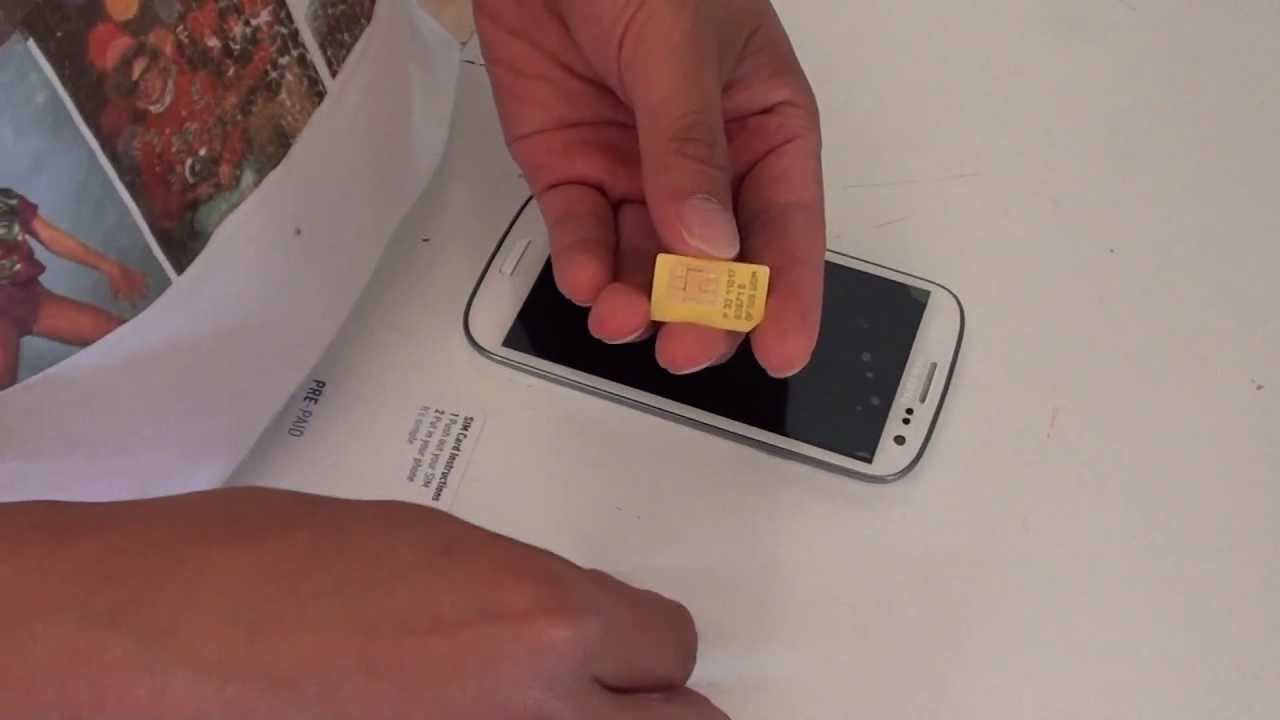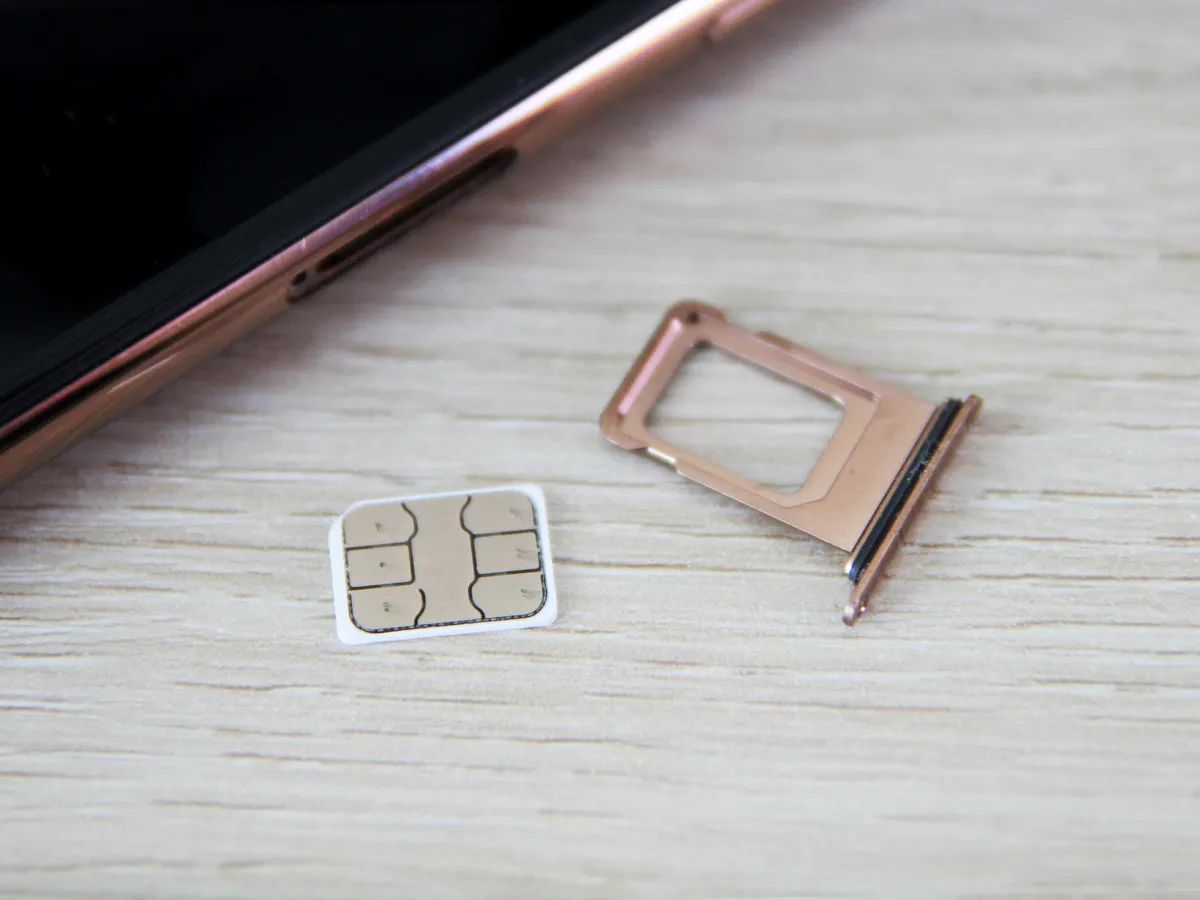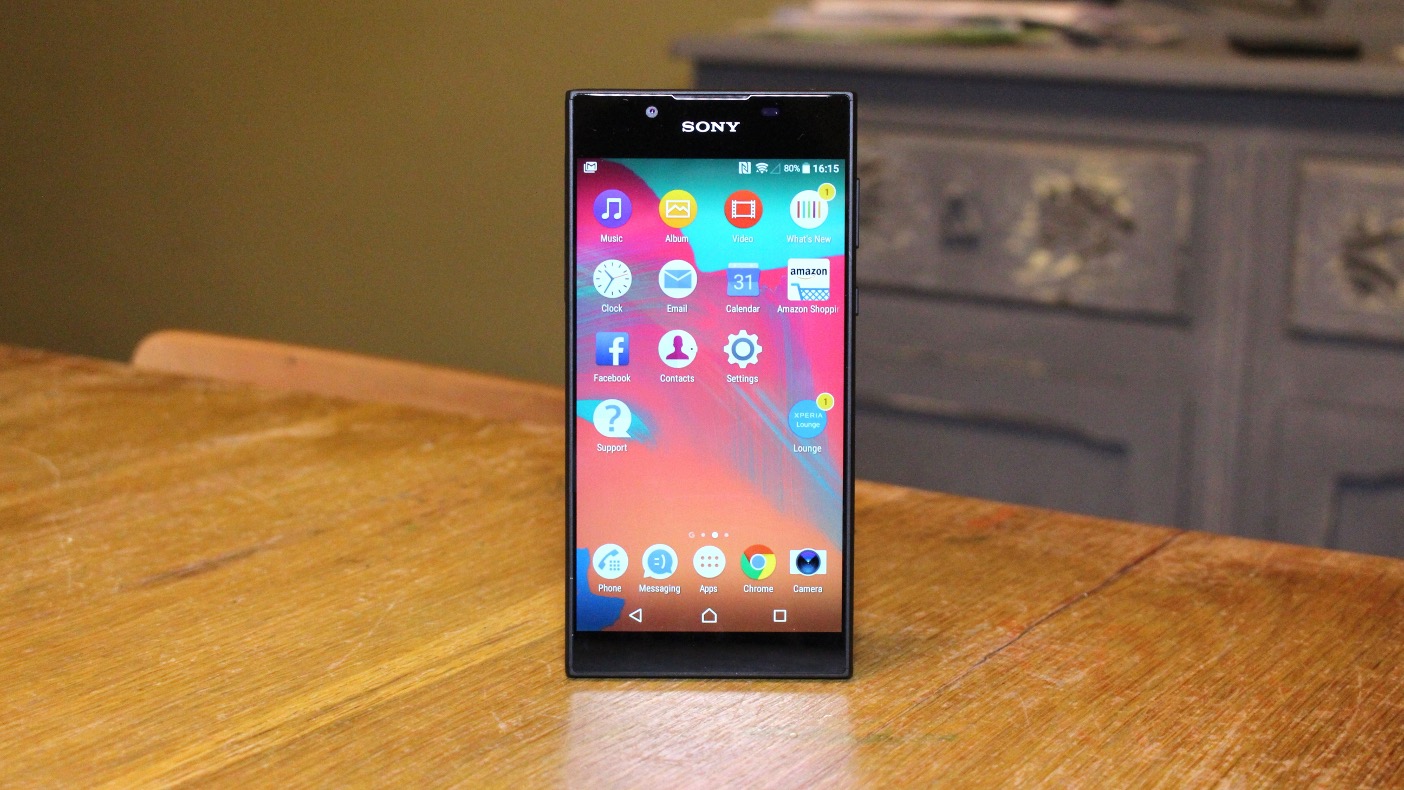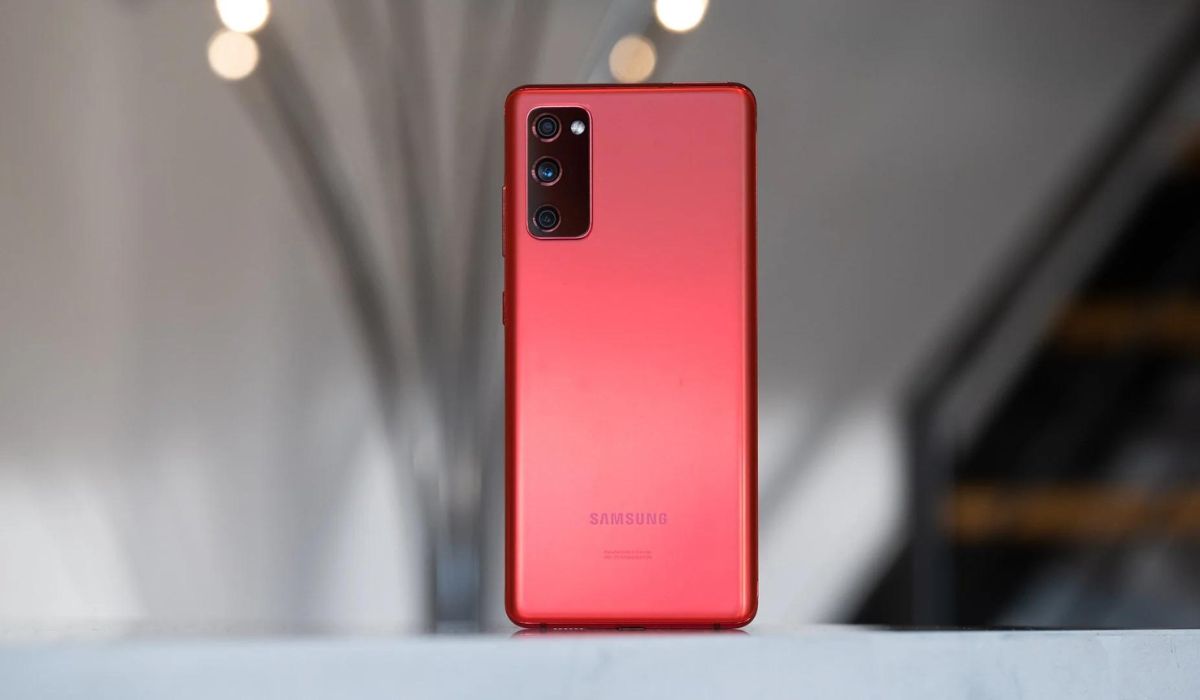Introduction
In the realm of mobile devices, two small yet mighty components play crucial roles in enabling their functionality and enhancing user experience: SD cards and SIM cards. These tiny chips, often overlooked, are instrumental in expanding storage capacity, facilitating seamless connectivity, and safeguarding sensitive data. While both cards share a diminutive stature, they serve vastly different purposes and possess distinct characteristics that set them apart. Understanding the disparities between SD cards and SIM cards is essential for optimizing their utility and harnessing the full potential of mobile devices.
As we delve into the intricacies of these diminutive yet indispensable components, we will unravel the nuances that distinguish SD cards from SIM cards. From their physical attributes to their storage capacities, usage scenarios, compatibility, and security features, each aspect contributes to their unique roles in the mobile ecosystem. By comprehending the disparities between these two cards, users can make informed decisions regarding their selection, deployment, and management, thereby elevating their mobile experience to new heights.
In the subsequent sections, we will embark on a comprehensive exploration of the physical characteristics, storage capacities, usage and functionality, compatibility, and security features of SD cards and SIM cards. By shedding light on these aspects, we aim to equip readers with the knowledge to discern between these essential components, empowering them to optimize their mobile devices in a manner that aligns with their individual needs and preferences.
Physical Characteristics
When examining the physical attributes of SD cards and SIM cards, it becomes evident that these diminutive chips possess distinct characteristics that align with their respective functionalities. SD cards, short for Secure Digital cards, are typically rectangular in shape, featuring a small form factor that allows them to seamlessly integrate into compatible slots within mobile devices. The dimensions of SD cards adhere to industry standards, ensuring uniformity and compatibility across a myriad of devices, including smartphones, digital cameras, and portable gaming consoles.
In contrast, SIM cards, or Subscriber Identity Module cards, are characterized by their smaller size, with a distinctive notch on one corner that facilitates their insertion into designated slots within mobile phones. The compact nature of SIM cards enables them to fulfill their primary role of authenticating a user's identity and enabling cellular connectivity. Despite their diminutive size, SIM cards play a pivotal role in enabling voice calls, text messaging, and data connectivity, thereby serving as the linchpin of mobile communication.
Moreover, the physical composition of SD cards and SIM cards differs significantly. SD cards are predominantly constructed using durable materials, such as plastic and metal, to ensure robustness and longevity. This robust construction is essential for safeguarding the data stored within the SD card, protecting it from physical damage and environmental factors. On the other hand, SIM cards are crafted from resilient materials that withstand frequent insertion and removal from mobile devices, ensuring their durability and longevity despite their petite dimensions.
Furthermore, the labeling and markings on SD cards and SIM cards serve as visual indicators of their respective functionalities. SD cards often feature capacity labels and speed classifications, denoting their storage capacity and data transfer rates. In contrast, SIM cards bear unique identification numbers and network operator branding, signifying their association with a specific mobile network. These visual cues aid users in distinguishing between SD cards and SIM cards, enabling them to identify and deploy the appropriate card for their intended purpose.
In essence, the physical characteristics of SD cards and SIM cards embody their distinct roles and functionalities within the realm of mobile devices. While SD cards emphasize storage expansion and data management, SIM cards prioritize cellular connectivity and user authentication, each manifesting its unique attributes to fulfill its designated function within the mobile ecosystem.
Storage Capacity
When comparing the storage capacity of SD cards and SIM cards, a stark contrast emerges, reflecting their divergent roles in the realm of mobile devices. SD cards are synonymous with expansive storage capabilities, offering a wide spectrum of capacities that cater to the burgeoning demands for data storage. These versatile memory cards are available in varying capacities, ranging from a few gigabytes to several terabytes, accommodating the diverse needs of users across different devices and applications. Whether it's capturing high-resolution photographs, recording 4K videos, or storing extensive music libraries, SD cards stand as stalwart companions, empowering users to expand their device's storage capacity exponentially.
In contrast, SIM cards diverge from this trajectory, as their primary function pertains to user authentication and cellular connectivity rather than data storage. SIM cards are not designed to serve as repositories for user data or multimedia content; instead, they are engineered to authenticate a user's identity and facilitate access to mobile networks. As a result, the storage capacity of SIM cards is markedly restricted, typically limited to a minuscule amount of memory allocated for storing essential information such as contact details, network authentication data, and subscriber-specific information. This nominal storage allocation aligns with the core purpose of SIM cards, which revolves around enabling communication services rather than serving as data repositories.
The disparity in storage capacity between SD cards and SIM cards underscores their distinctive roles within the mobile ecosystem. While SD cards stand as beacons of expansive storage, catering to the burgeoning digital content consumption and creation, SIM cards remain steadfast in their role as enablers of seamless communication, prioritizing user authentication and network connectivity. By recognizing this dichotomy, users can leverage the complementary capabilities of SD cards and SIM cards to optimize their mobile experience, harnessing the power of abundant storage and seamless connectivity in unison.
In essence, the divergent storage capacities of SD cards and SIM cards encapsulate their unique contributions to the mobile landscape, empowering users to expand their storage horizons and stay seamlessly connected in a world driven by digital interactions.
Usage and Functionality
The usage and functionality of SD cards and SIM cards epitomize the convergence of technological prowess and user-centric design, each serving distinct yet indispensable roles within the mobile ecosystem. SD cards, renowned for their prowess in expanding storage capacity, are veritable powerhouses that cater to the burgeoning demands for data storage across a myriad of devices. Their versatility extends beyond conventional smartphones, encompassing digital cameras, portable gaming consoles, and other digital devices, thereby positioning them as ubiquitous companions in the realm of digital content creation and consumption.
SD cards empower users to transcend the constraints of internal device storage, enabling them to store vast libraries of high-resolution photographs, 4K videos, and extensive music collections with unparalleled ease. Furthermore, the seamless integration of SD cards into various devices fosters a seamless data management experience, allowing users to effortlessly transfer, store, and access their digital content across multiple platforms. Whether it's capturing breathtaking landscapes, preserving cherished memories, or preserving critical data, SD cards stand as stalwart allies, ensuring that users can expand their storage horizons without compromise.
On the other hand, SIM cards embody a different facet of functionality, pivoting towards the realm of seamless communication and network connectivity. As the linchpin of cellular connectivity, SIM cards authenticate a user's identity and facilitate access to mobile networks, enabling voice calls, text messaging, and data connectivity. Their compact form factor belies their pivotal role in enabling seamless communication, underpinning the interconnected digital fabric that defines modern-day interactions.
Moreover, SIM cards are imbued with the capability to store essential subscriber-specific information, contact details, and network authentication data, thereby ensuring a seamless and secure communication experience. This functionality aligns with the core purpose of SIM cards, which revolves around enabling communication services and fostering connectivity, thereby enriching the mobile experience with a seamless symphony of voice, data, and messaging services.
In essence, the usage and functionality of SD cards and SIM cards converge to enhance the mobile experience, empowering users to expand their storage horizons and stay seamlessly connected in a world driven by digital interactions. By embracing the complementary capabilities of these diminutive yet indispensable components, users can unlock the full potential of their mobile devices, seamlessly bridging the realms of expansive storage and seamless connectivity to enrich their digital endeavors.
Compatibility
Compatibility stands as a pivotal facet that distinguishes the utilization of SD cards and SIM cards within the expansive landscape of mobile devices. SD cards, renowned for their versatility and interoperability, exhibit a remarkable degree of compatibility across a myriad of devices, transcending the confines of specific brands or models. This universality stems from the adherence to industry standards, ensuring that SD cards seamlessly integrate into a diverse array of devices, including smartphones, digital cameras, camcorders, and portable gaming consoles. This broad compatibility empowers users to leverage a single SD card across multiple devices, fostering a cohesive and streamlined data management experience that transcends the limitations of device-specific storage.
Furthermore, the compatibility of SD cards extends beyond conventional devices, encompassing a spectrum of contemporary gadgets, such as drones, dash cams, and audio recorders. This expansive compatibility underscores the ubiquitous nature of SD cards, positioning them as indispensable companions for users immersed in the realm of digital content creation and consumption. Whether it's capturing aerial vistas with a drone, documenting scenic road trips with a dash cam, or recording high-fidelity audio with a portable recorder, SD cards seamlessly adapt to diverse devices, ensuring a harmonious fusion of storage and functionality.
In contrast, SIM cards carve a distinctive path in terms of compatibility, as their utilization revolves around cellular connectivity and network interoperability. SIM cards are designed to interface with mobile phones and other cellular-enabled devices, facilitating access to mobile networks and enabling seamless communication services. This compatibility extends across a spectrum of mobile devices, encompassing smartphones, feature phones, tablets, and wearable gadgets, thereby ensuring ubiquitous connectivity that transcends the confines of specific devices or manufacturers.
Moreover, the global standardization of SIM cards, exemplified by form factors such as Mini-SIM, Micro-SIM, and Nano-SIM, underscores their interoperability across a myriad of devices and mobile networks. This standardization empowers users to seamlessly transfer their SIM card between compatible devices, fostering a seamless continuity of cellular connectivity and communication services. Whether it's upgrading to a new smartphone, embracing the convenience of a wearable device, or utilizing a tablet for on-the-go productivity, SIM cards stand as steadfast enablers of seamless connectivity, transcending the barriers of device-specific limitations.
In essence, the compatibility of SD cards and SIM cards embodies their adaptability and interoperability within the mobile landscape, empowering users to seamlessly integrate storage expansion and cellular connectivity across a diverse array of devices. By embracing the universal compatibility of these diminutive yet indispensable components, users can transcend the confines of device-specific limitations, fostering a cohesive and interconnected mobile experience that harmonizes storage expansion and seamless communication.
Security and Data Protection
Security and data protection stand as paramount considerations in the realm of mobile devices, underscoring the imperative need to safeguard sensitive information and mitigate potential vulnerabilities. In this context, SD cards and SIM cards play pivotal roles in fortifying the security posture of mobile devices, each exhibiting distinct attributes that contribute to the overarching goal of preserving data integrity and user privacy.
SD cards, renowned for their expansive storage capabilities, embody a multifaceted approach to security and data protection. These memory cards often feature built-in security mechanisms, such as write-protection switches and data encryption functionalities, that empower users to fortify the confidentiality and integrity of their stored data. The implementation of write-protection switches enables users to prevent unauthorized modifications to the data stored on the SD card, thereby safeguarding it from tampering or accidental deletion. Furthermore, advanced SD cards integrate robust encryption protocols that encode the stored data, rendering it indecipherable to unauthorized entities and bolstering the overall security posture of the stored content. This encryption-centric approach empowers users to fortify their digital assets, ensuring that sensitive information remains shielded from unauthorized access and exploitation.
In contrast, SIM cards pivot towards a different realm of security and data protection, prioritizing user authentication and network security. SIM cards are imbued with embedded security features, such as authentication algorithms and cryptographic protocols, that underpin their role in authenticating a user's identity and enabling secure access to mobile networks. These security measures not only validate the user's identity but also establish secure communication channels with mobile network operators, thereby fortifying the confidentiality and integrity of voice calls, text messages, and data transmissions. Moreover, SIM cards often integrate remote management capabilities that enable mobile network operators to deploy security updates and patches, ensuring that the card's security mechanisms remain resilient against emerging threats and vulnerabilities.
Furthermore, SIM cards serve as custodians of subscriber-specific information, contact details, and network authentication data, necessitating stringent security measures to safeguard this sensitive information. The integration of tamper-resistant hardware and secure storage elements within SIM cards fortifies their resilience against unauthorized access and data breaches, ensuring that subscriber information remains shielded from exploitation and unauthorized tampering.
In essence, the security and data protection attributes of SD cards and SIM cards converge to fortify the mobile ecosystem, empowering users to safeguard their digital assets and preserve the confidentiality of their communications. By embracing the inherent security mechanisms of these diminutive yet indispensable components, users can fortify their mobile experience with a robust layer of data protection and privacy preservation, ensuring that their digital endeavors unfold within a secure and resilient environment.
Conclusion
In the ever-evolving landscape of mobile devices, the dichotomy between SD cards and SIM cards emerges as a testament to the diverse facets of modern connectivity and digital content management. Through our comprehensive exploration of their physical characteristics, storage capacities, usage and functionality, compatibility, and security features, it becomes evident that these diminutive yet indispensable components play pivotal roles in enriching the mobile experience.
SD cards, heralded for their expansive storage capacities and versatile compatibility, stand as stalwart allies in the realm of digital content creation and consumption. Their robust construction, coupled with advanced security mechanisms, empowers users to transcend the constraints of internal device storage, fostering a seamless data management experience that aligns with the burgeoning demands for multimedia content storage. From high-resolution photographs to 4K videos and extensive music libraries, SD cards serve as beacons of storage expansion, enabling users to curate vast repositories of digital content without compromise.
On the other hand, SIM cards carve a distinctive path in the realm of seamless communication and network interoperability. Their compact form factor belies their pivotal role in enabling cellular connectivity, underpinning the interconnected digital fabric that defines modern-day interactions. With embedded security features and remote management capabilities, SIM cards fortify the confidentiality and integrity of voice calls, text messages, and data transmissions, ensuring that users can communicate seamlessly within a secure and resilient environment.
By discerning the nuances that distinguish SD cards from SIM cards, users can optimize their mobile experience, harnessing the complementary capabilities of these diminutive yet indispensable components to expand their storage horizons and stay seamlessly connected. Whether it's capturing breathtaking moments, preserving cherished memories, or fostering seamless communication, the convergence of SD cards and SIM cards enriches the mobile ecosystem with a harmonious symphony of storage expansion and connectivity.
In essence, the disparities between SD cards and SIM cards underscore their unique contributions to the mobile landscape, positioning them as indispensable enablers of digital endeavors. By embracing the inherent capabilities of these diminutive yet indispensable components, users can elevate their mobile experience to new heights, fostering a seamless fusion of storage expansion, seamless communication, and data protection within a dynamic and interconnected digital realm.







